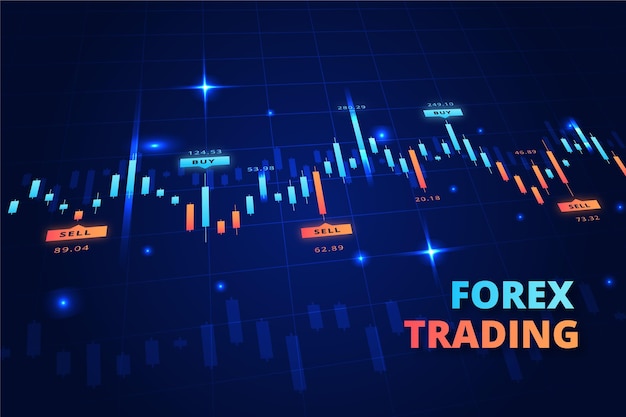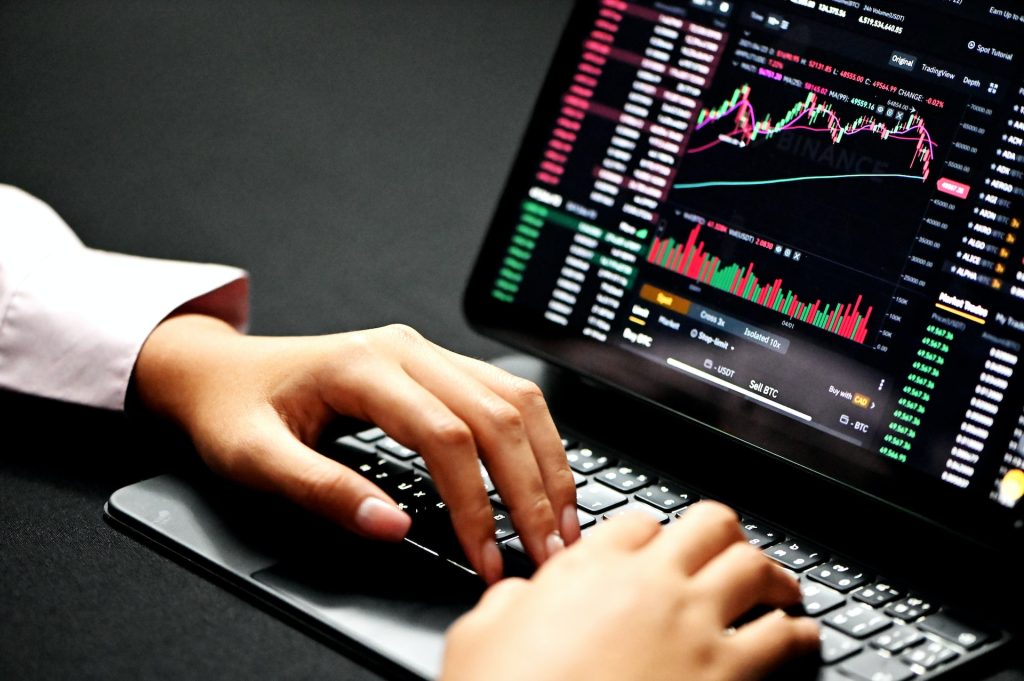New Facts On Deciding On Forex Trading Websites
New Facts On Deciding On Forex Trading Websites
Blog Article
If You Are Thinking About Trading Forex Online It Is Important To Consider The Following 10 Tips On Understanding The Market And A Strategy.
Here are the top 10 suggestions for trading Forex online: 1. Ensure you are aware of the market and its strategies. 2. Manage your risks. 3. Increase your chances of getting successful. These are the 10 most important points to take into consideration when trading Forex on-line: 1.
Understanding the Economic Indicators
Economic indicators (like GDP figures data on employment, GDP rates, and inflation figures) are indicators that show the state of health of a particular country, are essential for Forex. For example good employment statistics in the U.S. typically strengthens the USD. To stay informed of important announcements that may affect currencies, be familiar with the economic calendar.
2. Concentrate on Risk Management
Develop a risk management strategy right from the beginning. Set up stop-loss, take-profit and profit goals to safeguard and limit your losses. A lot of experienced traders advise just putting in a small percentage of your trading account (e.g. between 1-2%) per trade.
3. Make sure you use leverage with care
Use leverage judiciously. While brokers may provide leverage that is high however, it is best to start using a lesser leverage in order to get a better understanding of the market and its impact on your positions. Over-leveraging can lead to significant losses.
4. Trade Plan
A good plan for trading will help keep you disciplined. Set out your goals for trading, entry and exit point as well as your the risk tolerance. You should determine the strategies that will be used, including the decision of whether you want to use fundamental analysis, technical analysis or both.
5. Master Technical Analysis Basics
Understanding the importance of technical analysis in Forex trading is essential. Know about moving averages, candlestick patterns, support and resistence levels as well as trend lines and other technical analysis tools. These tools can help identify potential trading opportunities and also manage entry/exit points effectively.
6. Global News Updates
Political events, trade deals central bank policies as well as natural disasters could significantly impact currency markets. For instance, a surprise interest rate cut by a central bank can affect the currency's strength. Staying updated on global news helps you anticipate the possibility of market changes.
7. Which currency pairs should you Utilize?
These pairs are great for beginners because they're more liquid and stable. While exotic pairs can offer some high returns but they are also unstable and risky. Understanding each currency pair's characteristics can help you select which ones are suitable for your style of trading.
8. Demo account is the first.
Utilize a Demo Account in order to try out strategies, and get familiar with the trading platforms prior to attempting live trading. It is a good idea to gain confidence using a demo account to practice your strategies and to make mistakes.
9. Monitor Interest Rates and Central Bank Policies
Interest rates and monetary policies play a major role in the value of currencies for central banks. In order to attract foreign investors high interest rates are needed. However, lower rates can weaken the currency. The Federal Reserve, European Central Bank and other central banks make choices which can have a major impact on currency trends.
10. Keep an Journal of Your Trades
Keep a detailed journal of all your trades. This will increase your discipline as well as highlight your strengths. Record all transactions, including reasons behind trading as well as the time of entry and exit and the outcomes. By reviewing this information on a regular basis it will help you identify patterns in your trading behaviors and refine your strategies as time goes by.
To summarize the point, success in forex trading is based on a thorough study of the market strategy, strategic planning, controlled execution and a mixture of all three. Stay informed and manage your risk. Adapt strategies to market conditions as they alter. Have a look at the top rated https://th.roboforex.com/ for website advice including top forex brokers, best forex trading broker, app forex trading, forex and trading, trader fx, forex broker platform, fx trade, forexcom, best forex trading platform, best currency brokers and more. 
Top 10 Technical And Fundamental Analysis Tips For Those Who Are Considering Trading Forex Online
Fundamental analysis and technical analysis play crucial roles in Forex trading. Mastering them can significantly improve your ability to make informed and strategic decisions. Here are the top ten tips for using the basics of analysis and technical knowledge in forex trading.
1. Identify the most important Levels of Support and Resistance
Support and resistance levels are levels at which currency pairs often pause, or even reverse. They act as psychological barriers, making them crucial when planning entry and exit. It is crucial to practice identifying these zones to understand the areas how the market will turn or begin to break out.
2. Make use of multiple timeframes for Wider Perspective
The analysis of charts for different timeframes (e.g., daily, 4-hour, and 1-hour) gives insight into the bigger picture and shorter-term trends. The higher timeframes will show you the overall trend while lower timeframes will reveal beginning points and the timing.
3. Master Key Indicators
Moving Averages, Relative Strength Index (RSI), Moving Average Convergence Divergence Divergence(MACD) are the most important indicators for Forex trading. You can improve your analysis by understanding the way each indicator works and combining them.
4. Be aware of Candlestick Patterns
Candlestick patterns that incorporate the hammer and doji patterns, and also engulfing Doji patterns suggest potential price reversals. To recognize potential changes in the price action be familiar with patterns. Combining candlesticks with other tools such as support/resistance could aid in improving your timing.
5. Analyze trends for directional clues
Moving-averages and trends are used to find markets that are in uptrends, sidesways, or downtrends. Forex traders are frequently enticed to invest in the direction the trend is moving. This approach produces consistent outcomes. If you are not an expert, you should avoid trading against the trend.
Fundamental Analysis Tips
6. Understand Central Bank Policies and Interest Rates
Central banks, such as the Federal Reserve Bank and the European Central Bank are in charge of the interest rates. These rates directly affect the value of currency. A currency's value is affected by the rate at which it is lent. Higher rates tend to boost the strength of the currency, while lower rates can decrease its value. Keep an eye on central bank releases, since they can create big market shifts.
7. Follow Economic Indicators Reports
The most important economic indicators, such as GDP, unemployment rates as well as inflation and consumer confidence, give information about a country's well-being and affect the currency's value. You can use an economic calendar to stay current with the latest releases and assess what impact they have on the currency pairs that you trade.
8. Geopolitical Events and News Analysis
Markets can be affected by events such as election, conflict, or trade negotiations. Be aware of world news, especially with regard to major economies such as the U.S.A., Eurozone and China. Unexpected geopolitical shifts could lead to volatility, so be prepared to change your strategy as needed.
Combining Technical and Fundamental Analysis
9. Align technical signals with fundamental Events
Combining fundamental and technical analysis will help you make better decisions. If, for example, the technical setup indicates an upward trend, and an economic report that is positive is anticipated, both variables can confirm the strength of buying signals. Combining these two strategies can reduce the uncertainty and improving your odds of success.
10. Utilize risk events to trade Opportunities
The most significant events, like Federal Reserve meetings or non-farm payroll (NFP) releases, create instability, which can result in rapid price fluctuations. Most traders avoid this time due to the unpredictability. If you are experienced using the power of technical analysis to make the most of price fluctuations. You should be careful and place tight stop-loss stops.
The combination of technical and fundamental analysis is essential in Forex trading to give traders a comprehensive knowledge of the market. These techniques will help traders better navigate the currency markets, take more strategic decisions and improve the overall efficiency of their business. Have a look at the recommended https://th.roboforex.com/about/company/news/ for site info including best forex trading app, top forex trading apps, foreign exchange trading platform, regulated forex brokers, forex trading strategies, broker forex usa, top forex brokers, best broker for currency trading, fbs broker review, best currency brokers and more.
The Top 10 Trading Platform And Technology Tips For Forex Online Trading
1. Forex trading requires that you pick the most suitable platform for trading and be aware of the technology. We have compiled our top 10 tips on how to use the latest technology and platforms for trading to enhance your experience.
Select a Platform that is user-friendly
Opt for a platform that is intuitive and simple to use. It should be easy to navigate charts, manage trades, and even place orders. MetaTrader 4 and MetaTrader 5.
2. Ensure Strong Internet Connectivity
Forex trading depends on dependable and fast internet access. Slow or unstable connections can cause slipping delay, missed opportunities, and order execution. You should consider upgrading your internet connection or using a Virtual Private Server to ensure a stable and reliable connection in case you are experiencing frequent issues with connectivity.
3. Test Order Execution Time
A speedy processing of orders is crucial particularly if scalping or day trading are your primary activities. Platforms with fast execution times reduce slippage, and let you make trades and exit them exactly at the amount you wanted. You can try the platform using a Demo Account before committing to a real account.
4. Explore Charting Analysis Tools
A well-designed platform will provide advanced charting capabilities, indicators and tools for analysis of technical data. You should look for platforms that have custom charts, the capability to use a variety of indicators and the ability to conduct an in-depth analysis. This will help you make better decisions when it comes to trading.
5. Check mobile trading capabilities
Mobile trading apps let you to manage and monitor trades on the go. Check to see if the platform offers an app for mobile that is user-friendly and has the features you need for example, charting, account monitoring, trade execution, etc.
6. Automated Trading Option
A lot of traders utilize automated trading strategies and algorithmic trading strategies to improve the consistency of their trading, decrease manual work and boost efficiency. If automation is of interest for you, consider the trading platform that offers assistance for expert advisors (EAs), or bots for trading. For instance, MT4 and MT5 are compatible with various automated trading tools.
7. Verify Security Features
Security is crucial in online trading. Choose a platform that has encryption protocols (copyright) and two-factor verification (copyright) as well as additional security features to safeguard your personal information and funds. Platforms with weak security measures can expose users to cyber-attacks.
8. Get real-time updates and news feeds
To make right trading decisions, it is important to receive real-time updates regarding economic and price news. A reliable platform incorporates news feeds sourced from reliable sources and offers accurate, up to date market information. This allows you to keep up-to-date with developments that might impact your trading.
9. Test Compatibility With Your Trading Style
Different platforms suit different trading styles. For example, platforms that offer one-click trades and quick execution are ideal for scalpers, and those that have comprehensive charting and analysis tools are more suitable for swing traders. Make sure that the platform you select is compatible with your trading style.
10. Test Customer Support and Platform Reliability
Support from a reliable customer service is invaluable, especially if you need help with platform or technical problems. Contact support for any queries and find out how responsive they are as well as their expertise. Check the platform stability and uptime. Downtimes or crashes are likely to impact the trading experience.
By selecting a trading platform that aligns with your needs and understanding the technical aspects, you will be able to improve your trading efficiency and stay better equipped to deal with market changes. Prioritize security, usability and tools that will best fit your style of trading. Follow the most popular https://th.roboforex.com/about/client/security-policy/ for website tips including forex best trading app, platform for trading forex, top forex trading apps, regulated forex brokers, best currency trading platform, good forex trading platforms, foreign exchange trading platform, good forex trading platforms, fx trading platform, united states forex brokers and more.